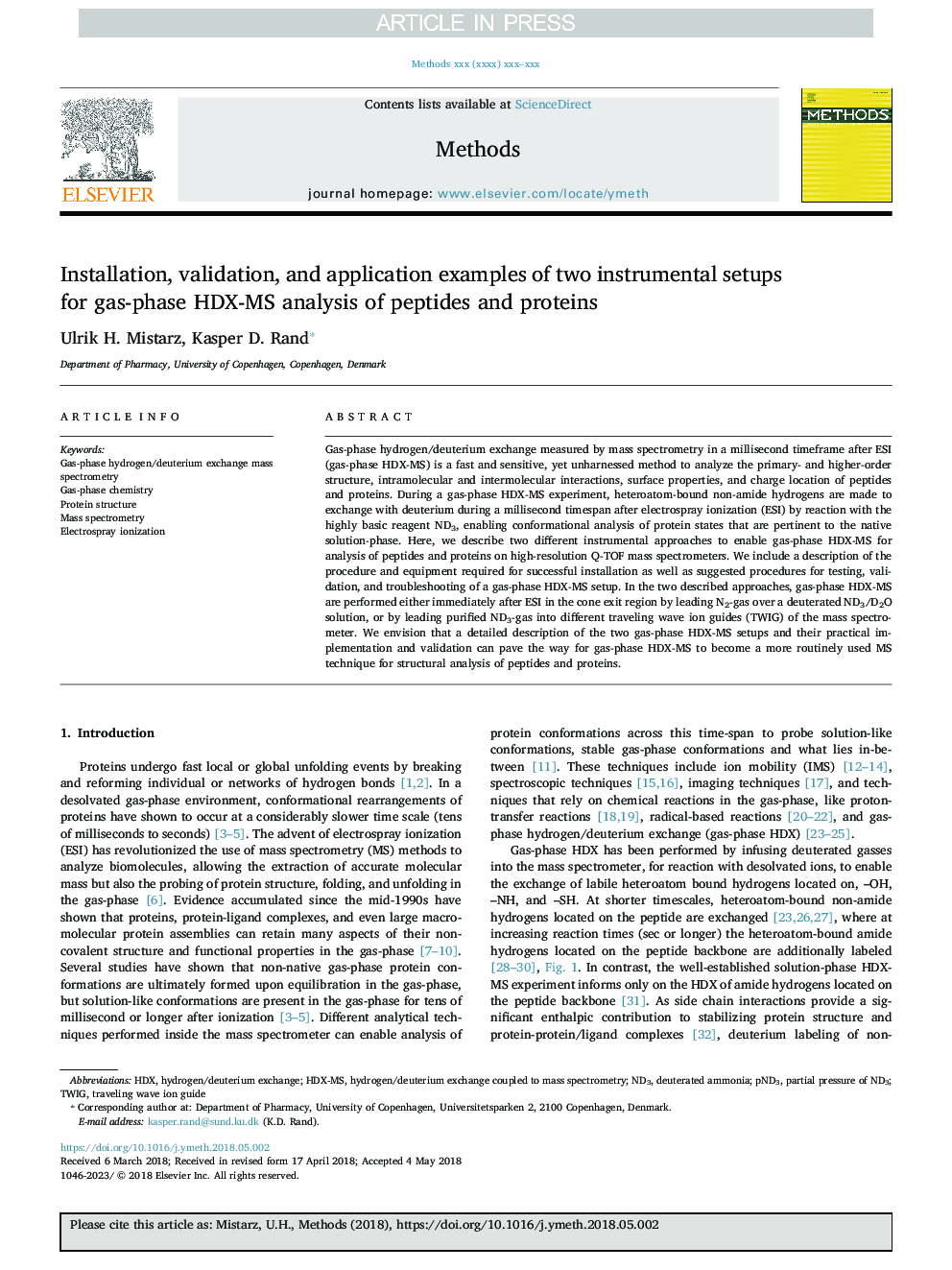| Article ID | Journal | Published Year | Pages | File Type |
|---|---|---|---|---|
| 8340008 | Methods | 2018 | 12 Pages |
Abstract
Gas-phase hydrogen/deuterium exchange measured by mass spectrometry in a millisecond timeframe after ESI (gas-phase HDX-MS) is a fast and sensitive, yet unharnessed method to analyze the primary- and higher-order structure, intramolecular and intermolecular interactions, surface properties, and charge location of peptides and proteins. During a gas-phase HDX-MS experiment, heteroatom-bound non-amide hydrogens are made to exchange with deuterium during a millisecond timespan after electrospray ionization (ESI) by reaction with the highly basic reagent ND3, enabling conformational analysis of protein states that are pertinent to the native solution-phase. Here, we describe two different instrumental approaches to enable gas-phase HDX-MS for analysis of peptides and proteins on high-resolution Q-TOF mass spectrometers. We include a description of the procedure and equipment required for successful installation as well as suggested procedures for testing, validation, and troubleshooting of a gas-phase HDX-MS setup. In the two described approaches, gas-phase HDX-MS are performed either immediately after ESI in the cone exit region by leading N2-gas over a deuterated ND3/D2O solution, or by leading purified ND3-gas into different traveling wave ion guides (TWIG) of the mass spectrometer. We envision that a detailed description of the two gas-phase HDX-MS setups and their practical implementation and validation can pave the way for gas-phase HDX-MS to become a more routinely used MS technique for structural analysis of peptides and proteins.
Keywords
Related Topics
Life Sciences
Biochemistry, Genetics and Molecular Biology
Biochemistry
Authors
Ulrik H. Mistarz, Kasper D. Rand,
